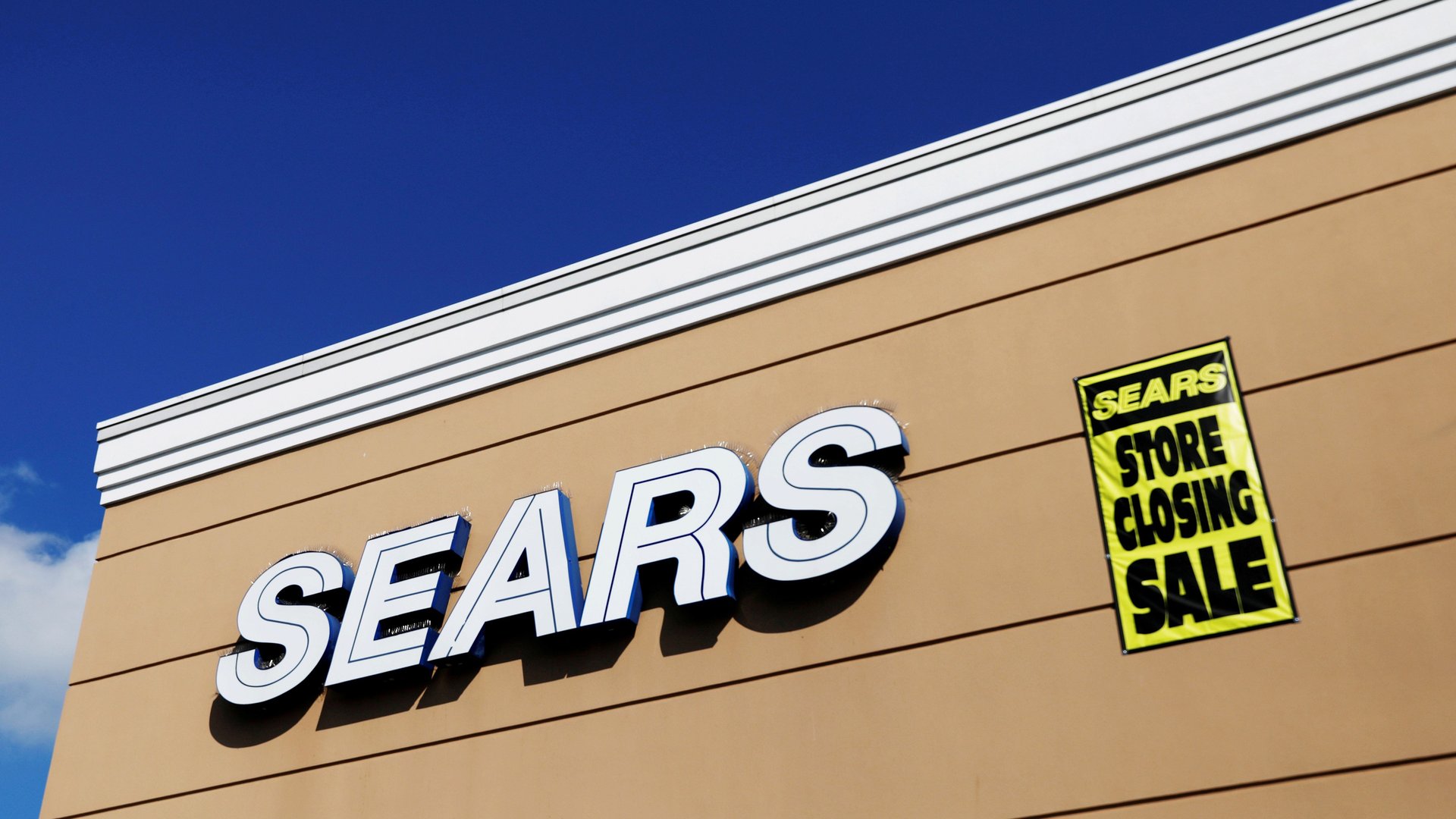Sears files for bankruptcy, the last gasp of its incredible fall
The local Sears was where generations of Americans went to buy their washing machines, power tools, home goods, and clothes.


The local Sears was where generations of Americans went to buy their washing machines, power tools, home goods, and clothes.
But the company that started as a mail-order business in the 19th century and grew into a titan of US retail through the 20th has now filed for bankruptcy protection, marking another blow for the American department store and a new low in Sears’s steep decline.
Some Sears and Kmart stores—the big-box retailer officially took over Sears in 2005 to create Sears Holdings in a bid to make both more competitive—will remain open, the company said. Sears Holdings will, however, close 142 unprofitable stores toward the end of this year. That’s in addition to the 46 closures Sears had previously announced. It once seemed that practically wherever you were in the US, a Sears was nearby. But particularly in the past several years, Sears and Kmart have had to aggressively slash their store counts.
The problems at Sears have been mounting for decades at this point, as the Washington Post outlined in a story (paywall) last year. For example, Sears was late responding to the rise of competitors focused on product niches it once dominated. Home Depot and Lowe’s undermined its home-improvement business. Stores like Best Buy ate into its electronics sales.
But most notably, Sears was never quite able to adjust to the decline of shopping malls and the rise of e-commerce, despite large investments to bolster its online business. Sears Holdings’s sales have been in a dramatic, decade-long slide, and the company hasn’t turned a profit since 2011.
The company’s debt, meanwhile, has grown. Edward Lampert, who announced that he will step down as CEO of Sears Holdings with the bankruptcy-protection filing but will remain chairman, engineered Kmart’s takeover of Sears. In his various efforts since to turn the business around, he used his hedge fund, ESL Investments, to buy up Sears stock and to lend money to Sears. He and his fund now own nearly half of Sears Holdings, and are its largest creditors: Sears Holdings owes about $2.5 billion to Lampert and ESL.
“I’ve never seen a company that was financed like this, and I’ve looked at the capital structure of thousands of companies,” Jared Ellias, a professor at the University of California’s Hastings College of the Law who studies corporate bankruptcies, told the Washington Post last year.
The bankruptcy filing could help soften the financial blow to Lampert, on the credit side at least. As for his stock, the last decade has seen practically all of Sears’s value wiped away.
For now, Sears will carry on. “The Company believes that a successful reorganization will save the Company and the jobs of tens of thousands of store associates,” it said in a statement. But the future of Sears remains very much in jeopardy.